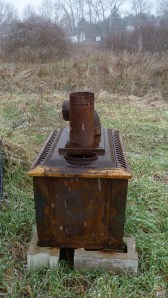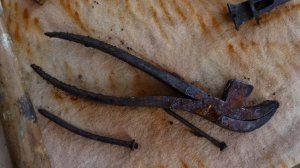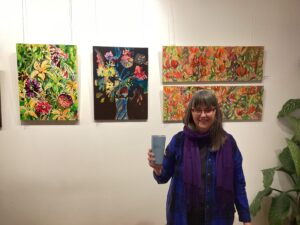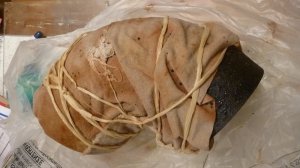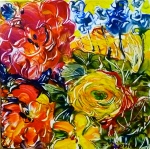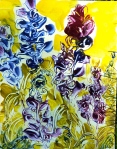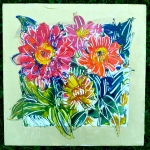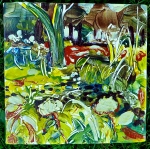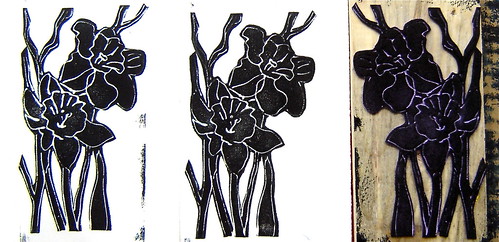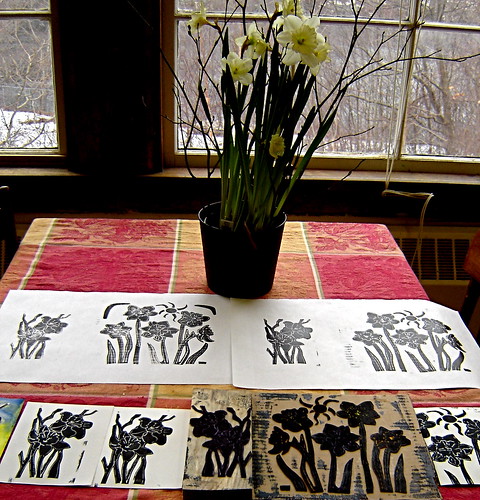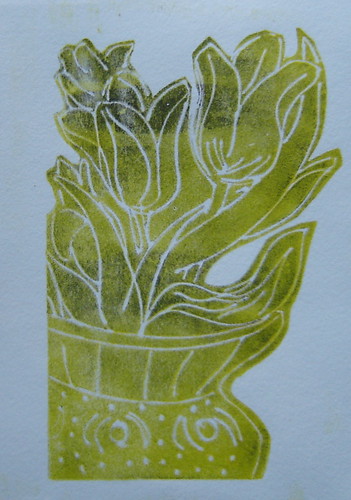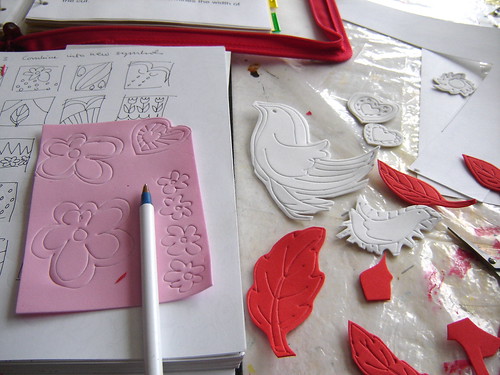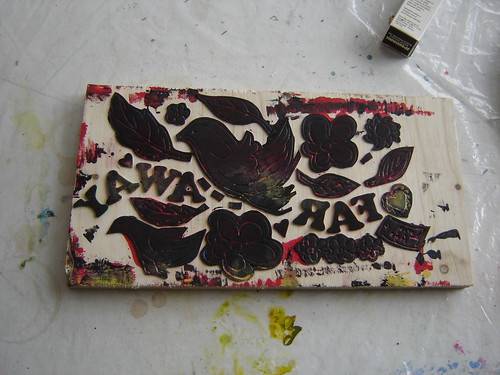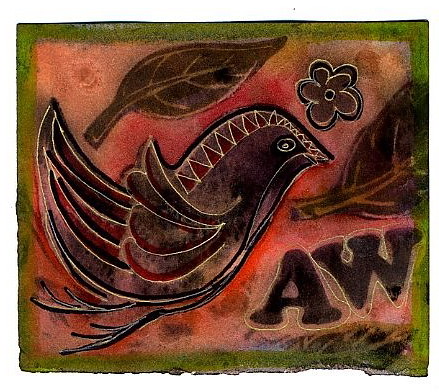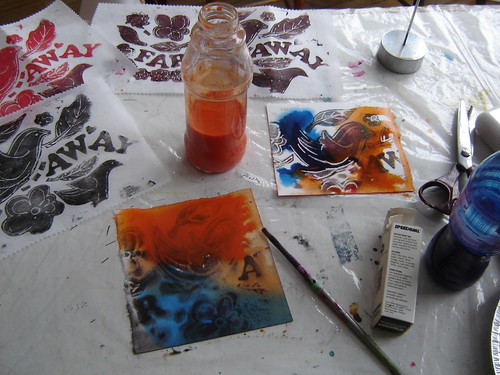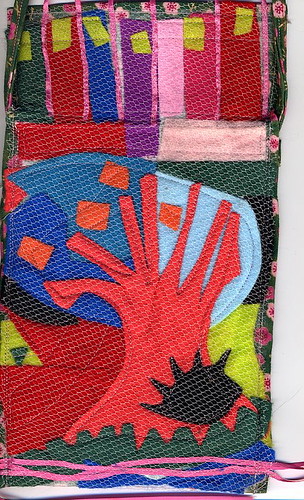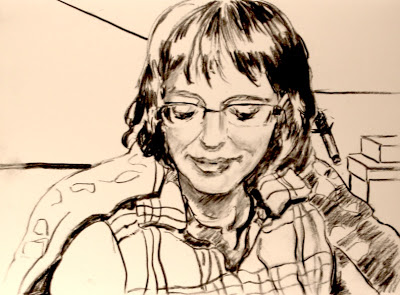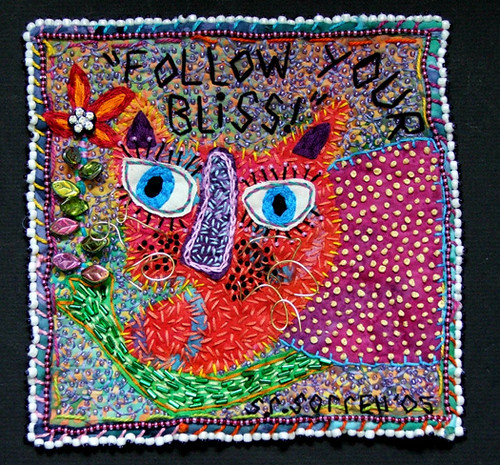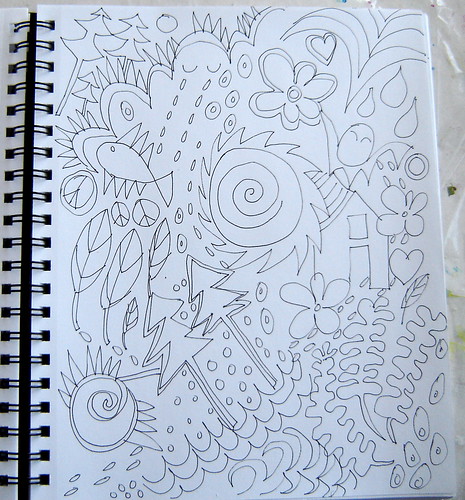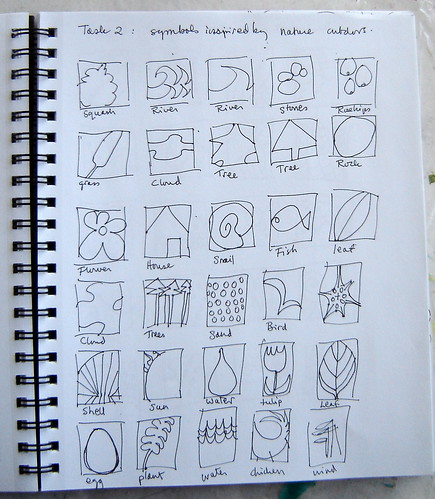 |
| In the Begonia Garden by Flora Doehler, 2010. 8″ x 8″ |
This past weekend I joined over 70 artists to ‘Paint the Town’ in Annapolis Royal. This annual fundraiser for the local Arts Council is a great opportunity for artists to show and sell their work and for collectors to watch artists at work and to buy art at reasonable prices.
The
Annapolis Region Community Arts Council (ARCAC) has sponsored the event for years and the weekend runs like a well-oiled machine. Artists arrive from all over Nova Scotia…over 7o painters this year. The artists set up all over town.
 |
| If you are curious about the contents of my painting kit, click on the photo and read the notes at Flickr. |
Volunteer ‘runners’ circulate and pick up the finished pieces in pizza boxes and take them back to the gallery at the Legion where they hang for sale all day with a ‘gallery’ price determined by the artist. At 5 o’clock the unsold work is auctioned by silent auction. The Arts Council gets 50% of the amount and thousands of dollars are raised this way every year.
 |
| The Artist entry fee is $12. |
I was thrilled to be able to set up my paints at the
Annapolis Royal Historic Gardens. This park is an oasis of flower garden beds organized around the centuries of the town.
The first morning I scouted around the park with its ancient trees.
I set up in a great spot with dappled light under towering trees. The begonias were a riot of colour and were nicely contrasted by blue salvia flowers. I pulled out all my gear and promptly dropped my piece of German Plum Cake upside-down on the grass. Not to be discouraged, I brushed it off and enjoyed it with my coffee while I studied the flowers and thought about my painterly approach to them. Meanwhile birds hopped around and sang and it was wonderful to be there.
 |
| Surrounded by happy flowers. |
Wonderful until I realized that I’d forgotten to bring containers for my paint water!! I finished my treat and headed for the recyling bin where I found plastic juice containers! My sharp knife soon transformed them into water jars and it was smooth sailing after that.
Here are the works I painted in the Begonia garden on Saturday. (Click on the images to enlarge them.)
The next day, Sunday, I spent the early morning in the Victorian Garden while there was still some shade to work in.
The colours were vivid and the zinnias were taller than me. At one point a butterfly was brought out and released to much fanfare.
 |
| This was my largest painting. I used up all my matt medium on it. |
My Sunday problem was that I ran out of matt medium! It’s an essential part of my kit because I use it to get the scratching-in effect in my paintings. I searched out other artists in the park and was given some by artist Shannon Bell and when that ran out, a bottle of the stuff from Louise Baker, an artist with a love of colour who lives in Halifax. Thank you Louise and Shannon!!!
Here are the paintings I did in the Victorian Garden until the sun drove me away. (Click on the images to enlarge them.)
After the heat of the flowers and the sun, I decided to seek out a cool, shady, quiet spot. I found this at the Lily pad pond.
The mosquitos thought it was a pretty nice spot too, in spite of my liberal spraying of citronella. In fact a couple wandered by while I was painting and asked me if I could tell them which flower was giving off that scent. I told them that I was the flower and we had a good laugh over that.
 |
| The challenge here was to edit the elements down to make sense of the scene in a painting. |
They were visiting from Montreal and I told them about the silent auction. They later lost out on the bids for 2 of my pieces, but found their way to our studio the next day where they bought 2 paintings that I had been working on in my garden. Here is one of them:
 |
| Nicotiana in garden chez moi. |
It was truly wonderful to connect with some of the people who bought my works. Over half of the purchasers and bidders had watched me paint in the park. They connected with my interpretation and they also connected with the setting. I think it was nice for them to see the process (well, not the dropped plum cake part). Oh, did I mention that all 12 paintings and sketches that I did over the weekend sold? It’s three days later and I’m still flying high about it.
These were my paintings at the lily pond. (Click on the images to enlarge).
At the end of the day I sketched the scene for myself with marker and brush on damp paper. A charming woman from New York walked by to admire it. She thought it would make a gorgeous wallpaper. I told her that it was my souvenir of the weekend and she suggested that I offer it at the silent auction so that she could bid on it.
Well I did and it sold for $50. Here it is for you to see:
 |
| The Pond sketch on 9″ x 12″ watercolour paper. ( The paper is actually white) |
 |
| Acrylic paint brushed into damp paper. |
It was an exciting weekend on many levels – wonderful to meet painters, wonderful to have such a positive response to my work, wonderful to create in such an inspiring setting. And, wonderful to earn some money too which was just as well because our house water situation was failing while I painted.
See you next year at Paint the Town!
 |
| photo courtesy of Trish Fry, Annapolis Royal Historic Gardens. |






